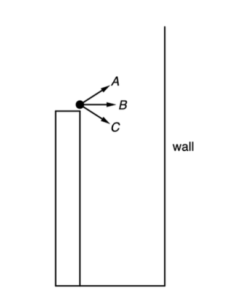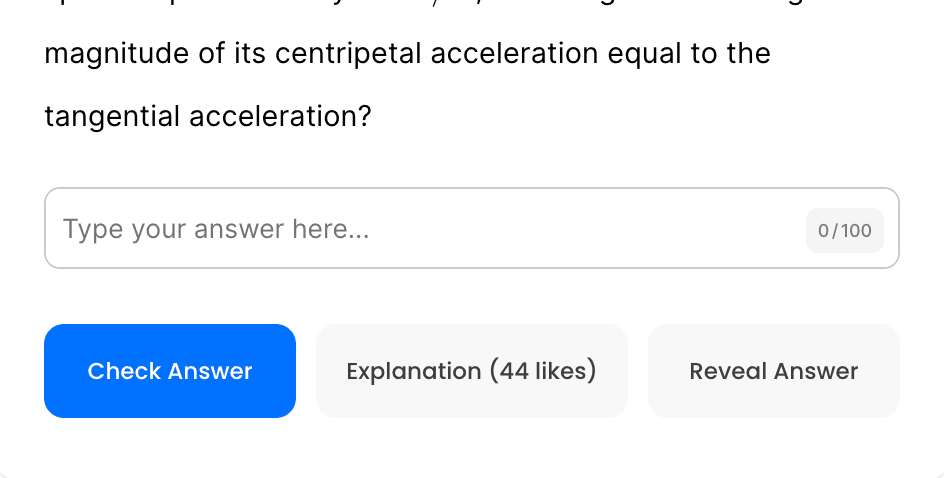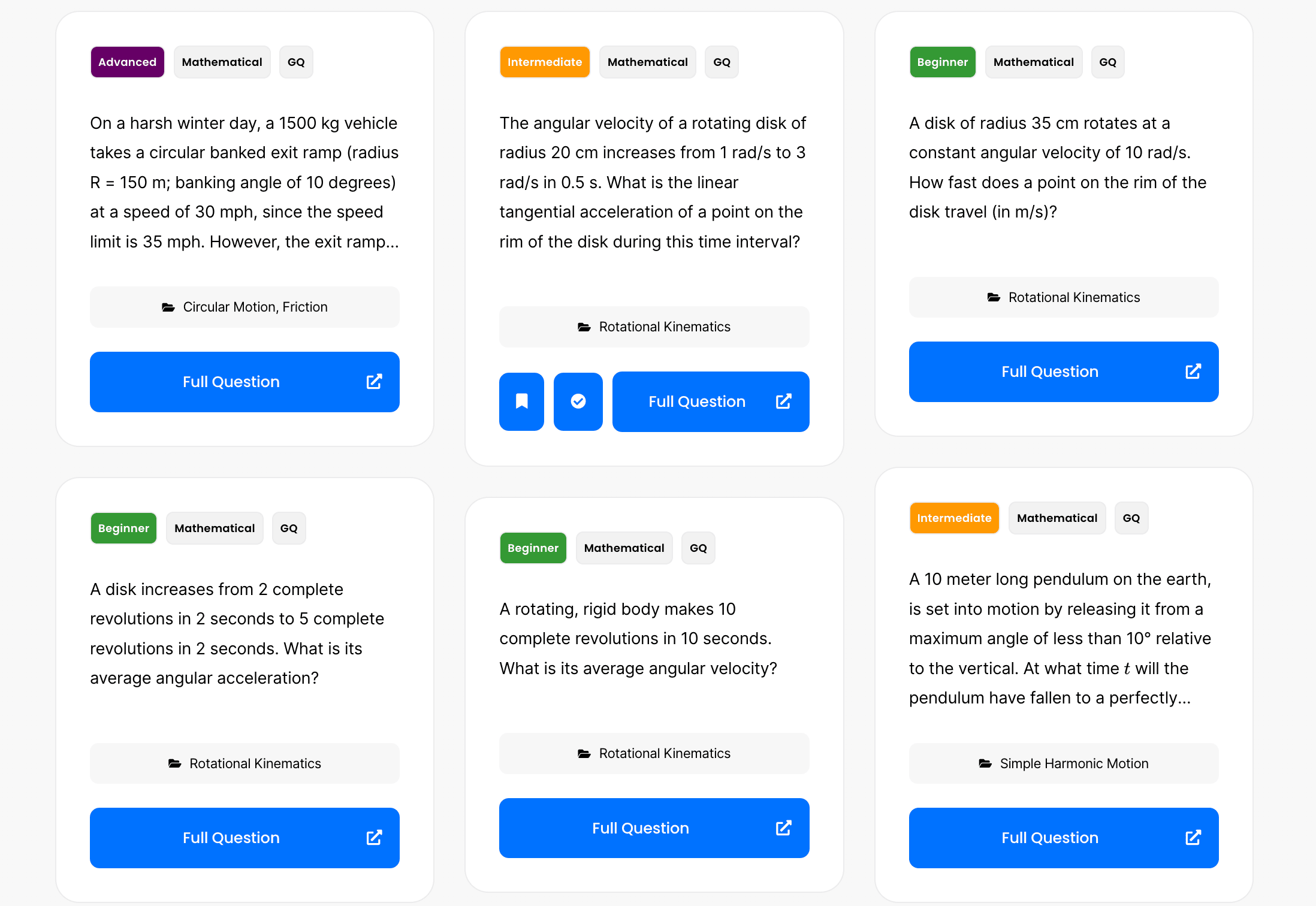A mass–spring system is oscillating in simple harmonic motion. At the exact moment the mass passes through its equilibrium position, which of the following statements is true?
 3 clay balls, labeled A, B, and C are launched from the same height at the same speed as shown above. A is launched at \( 30^\circ \) above horizontal, B is launched horizontally, and C is launched \( 30^\circ \) below the horizontal. They all hit the wall (before reaching the ground) in times \( t_A \), \( t_B \), and \( t_C \) respectively. Rank these times from least to greatest.
3 clay balls, labeled A, B, and C are launched from the same height at the same speed as shown above. A is launched at \( 30^\circ \) above horizontal, B is launched horizontally, and C is launched \( 30^\circ \) below the horizontal. They all hit the wall (before reaching the ground) in times \( t_A \), \( t_B \), and \( t_C \) respectively. Rank these times from least to greatest.
Which graph below shows that one of the runners started 10 meters further ahead of the other? Assume the y-axis is measured in meters and the x-axis is measured in seconds.
A hockey puck glides on perfectly frictionless ice at constant velocity. Which statement is true?
The magnitude of the gravitational field on the surface of a new planet is \(20 \, \text{N/kg}\). The planet’s mass is half the mass of Earth. The radius of Earth is \(6400 \, \text{km}\). What is the radius of the new planet?
A spring launches a \(4 \, \text{kg}\) block across a frictionless horizontal surface. The block then ascends a \(30^\circ\) incline with a kinetic friction coefficient of \(\mu_k = 0.25\), stopping after \(55 \, \text{m}\) on the incline. If the spring constant is \(800 \, \text{N/m}\), find the initial compression of the spring. Disregard friction while in contact with the spring.
A rocket is sent to shoot down an invading spacecraft that is hovering at an altitude of \( 1500 \, \text{m} \). The rocket is launched with an initial velocity of \( 180 \, \text{m/s} \). Find the following:
A block starts at rest on a frictionless inclined track which then turns into a circular loop of radius \( R \) and is vertical. In terms of \( R \) and constants, find the minimum height \( h \) above the bottom of the loop the block must start from so it makes it around the loop.
An object undergoes constant acceleration. Starting from rest, the object travels \( 5 \, \text{m} \) in the first second. Then it travels \( 15 \, \text{m} \) in the next second. What total distance will be covered after the 3rd second?
Why do you push down harder on the pedals of a bicycle when first starting out than when moving at constant speed? Why do you need to pedal at all when cycling at constant speed?
Suppose an object is accelerated by a force of \( 100 \) \( \text{N} \). Suddenly a second force of \( 100 \) \( \text{N} \) in the opposite direction is exerted on the object, so that the forces cancel. The object
A soccer ball is kicked horizontally off an \( 85 \) \( \text{m} \) high cliff at a speed of \( 34 \) \( \text{m/s} \). What is the ball’s final speed when it hits the ground below?
By continuing you (1) agree to our Terms of Use and Terms of Sale and (2) consent to sharing your IP and browser information used by this site’s security protocols as outlined in our Privacy Policy.
Quick Start Guide
AP physics 1, AP C, honors and advanced physics students.
Quickly filter questions by units and more.


Here’s guide to using 5 UBQ filters.
GQ = general question, MCQ = multiple choice, FRQ = free response.


Click the check or bookmark button.
Now you’ll be able to see completed or bookmarked questions at a glance!
Answer keys, personalized for you.

Phy will be responsible for grading your FRQs and GQs.
No more copy and pasting. Just solve and snap.
Questions for Mastery

By continuing you agree to nerd-notes.com Terms of Service, Privacy Policy, and our usage of user data.